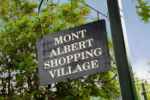OVERVIEW
The Black’s Estate Heritage Precinct
This precinct is of aesthetic and historical significance to the City of Whitehorse
as it contains the best and most intact collection of inter-war and 1940s substantially masonry buildings covering a number
of styles, but retaining a consistency in materials, scale, setback.
The precinct is rare in the Whitehorse area as an estate that was subdivided and substantially
developed in the 1920s and 30s. While there are many examples of these housing types throughout the municipality, they are
generally scattered. Often these types of buildings are infill in earlier subdivisions or were constructed in a 1920s subdivision
that only developed partially in the 1920s and 30s and then developed after the war.
The precinct has aesthetic significance as it contains some excellent examples of 1920s
and 30s housing in the range of styles prevalent at the time including Bungalow, Tudor (or English Cottage) Revival, Spanish
Mission, Georgian Revival and Streamline Moderne. Of particular note are elements such as masonry porches, distinctive chimneys,
curved walls and decorative brickwork
Characteristics of the precinct
1920s, 1930s and 40s buildings
-
Substantially single storey
-
Similar setbacks from the street
-
Driveways to one side of the house leading to a garage near or at the rear boundary,
with single crossover
-
Commonly masonry construction
-
Render over the masonry is common
-
Hipped roofs with terracotta or other ceramic tiles
-
Defined entry porches
-
Different colour brick used for decorative detailing
-
Similar scale (height) and double fronted, detached
-
Dominant front porches usually in masonry
-
Timber framed windows, typically making up less than 50% of any associated wall surface
-
Dominant chimneys, suited to the particular style of house, and used as a decorative element
Early, low pier and panel masonry (face brick and/or rendered finish), some reconstructed
timber framed wire fabric fences for the Californian Bungalow style houses, and originally some simple low picket fences.
The
Land had been held by the owner Mr Neil Black since the 1870s, and was auctioned on November 29, 1924.

